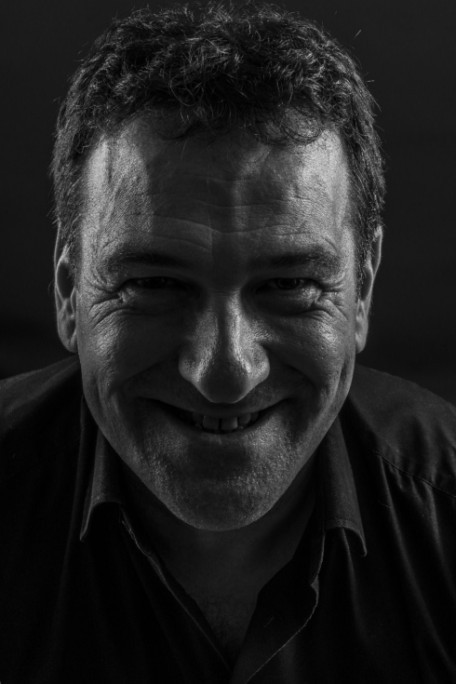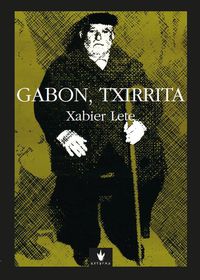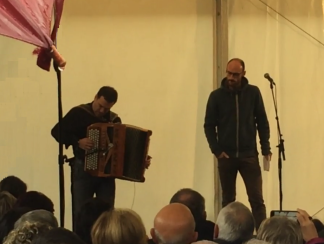12 - Beste larogei urtian - 1´49
'In Another Forty Years'
(Music: Traditional)
(Words: Amets Arzallus)
(Arranged
& produced by Joxan Goikoetxea)
Recording engineer: Joxan Goikoetxea
Recorded at Aztarna Studio (Hernani, Gipuzkoa) throughout 2017.
Mixing
and Digital Mastering:
Mikel F.Krutzaga – Musikart Studio (Amezketa - Gipuzkoa).
Amets Arzallus:
vocals
Joxan Goikoetxea: accordion
and ambients
This
verse by Amets Arzallus serves as an introduction to the next song, 'Fusilatu
zituztenei', whose words he also composed.
Txirrita, a native of Ereñotzu, Hernani, Gipuzkoa, was one of the
greatest bertsolaris (verse-improvisers) of the twentieth century.
He died in 1936. Amets' words echo a famous verse by Txirrita:
For
a little while after I'm buried
I won't be forgotten.
I'll be remembered
For another eighty years.

Amets'
verse runs:
Txirrita zanan urte berian
sartuagatik lurpian
zuen aipamen gutxi izanda
azken larogei urtian
Though
they buried you
The same year as Txirrita
You've been spoken of but little
In the past eighty years...
Its
meaning becomes chillingly clear in the context of the mass-murders
in Hernani in 1936, which the next song deals with (see notes to this
and the following track).
Milla zortzireun
irurogei ta
amalau urte urrian
lenengo plazan kantatu nuen
nik Hernaniko lurrian
San Antoniyo deitzen diogun
ermita baten aurrian
lagunak alkar ixtimatuaz
lengo oitura zarrian.
Joxe Migelek atera
zuen
oso izkera leguna:
“Au da, gaztiak, prezisamente,
guk egin bear deguna...
altxa dezagun San Antoniyo
gaur da beraren eguna!”
Gaur Goiaz-Txikin dago itxututa
orduko nere laguna.
Orduko ango bertsolariak
lau lagun giñen guziyak,
Hernanin bertan bataiatuak
barriyo artan aziyak;
Joxe Migel ta Erramun illak,
ni ta Juan Mari biziyak...
San Antoniyok merezi du ta
eman zaizkagun graziyak.
Irurogei ta amar
bat urte
badaduzkat bizkarrian,
kargamenturik txarrena au da
ezin utzi baztarrian;
anka batetik kojoka nabil
reuma daukat ixtarrian,
baiño baditut laguntzalliak,
ez nago modu txarrian.
Gazte-gazterik
asi nintzen ta
oraindaiño bitartian
zenbait umore eder jarri det
Kantabriyako partian;
pixka batian ez naiz aztuko
sartuagatik lurpian,
nere aipamenak izango dira
beste larogei urtian.
Por
algún tiempo no me olvidarán
aunque me vayan a enterrar,
al menos otros ochenta años,
seguro, me han de recordar.
For a little while after I'm buried
I won't be forgotten.
I'll be remembered
For another eighty years.
As we were preparing for some projects relating to the Donostia-San Sebastian 2016 Cultural Capital, we realised that the eighty years of Txirrita's famous verse were up that very year.
It served to deepen, if this were possible, our admiration for and devotion to him and it set in motion the re-staging of Xabier Lete's play about him, Gabon Txirrita.

To get a good idea of Txirrita's importance to culture I recommend you
read the prologue to the above-mentioned play, in which Xabi Paya, director
of cultural programming at Donostia-San Sebastian 2016, contends that
to undestand it you would need to draw a triangle with apices representing
Shakespeare, Cervantes and Txirrita.
Txirrita (aka. Joxe Miguel Lujanbio) died on 3 June, 1936, a few days before the military revolt that sparked the Civil War. The Nationalists, not knowing of his death, went to his farmhouse to kill him.
But a different fate befell countless thousands of others, the details
of whose sad end is still unknown, whose bodies lie unrecovered and
no reparation has been made.
Franco's troops entered Hernani on the 12-13 September, 1936. In the
following years the inhabitants of the town suffered violent Francoist
repression.
By the end of 1936 the Francoists had taken almost all the province
of Gipuzkoa and had turned Hernani into a place of execution. About
200 people were shot here, including republicans, socialists, communists
and Basque nationalists. The town became a symbol of the bloodiest and
most cruel Francoist repression.
It was a repression that lasted a long time and we may say that it hasn't
yet come to an end, since the victims haven't all been named, nor have
they received the recognition they deserve, nor has justice been done
to them.
On
5 November, 2016, Hernani Town Hall organised a tribute to those murdered
by Franco's troops under the name 'Recovering our memory..."towards
Spring"'.
I took part in the ceremony with Amets Arzallus, who sang 'Beste larogei
urtian' as a prelude to 'Fusilatu zituztenei' (the next track on the
CD).

The air of sadness of the family members, relatives and townspeople present at the cemetery was accentuated by the cold and incessant rain which never let up, not even while the wreath was being laid at the monument placed in fornt of the execution wall.
Argi
horma (Muro de la luz)
Carlos López de Ceballos (2006)
I
wanted to suggest in music the atmosphere of that moving ceremony. It's
the only time I've ever used my Victoria Cadenza on an Alboka recording.
It seemed necessary.
One
final note on the melody used here: it's an adaptation of the one we
know to have been used by Txirrita for his verses and also in his first
public performance in 1874. Indeed, in all its simplicity it transmits
feelings of profound sorrow and powerlessness.